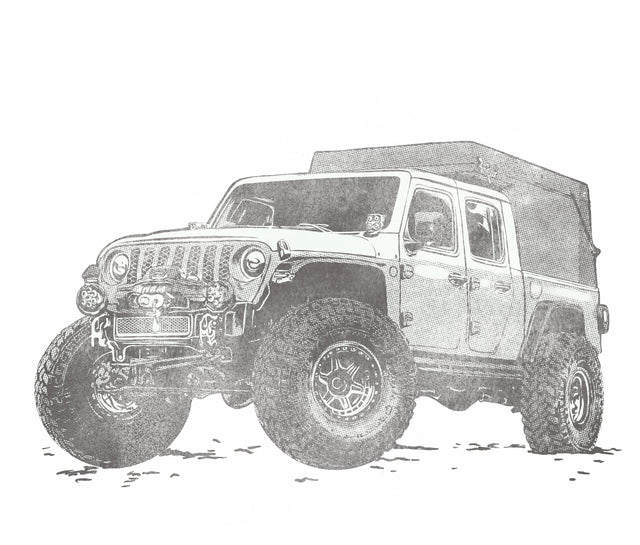The Jeep, an automotive legend renowned for its ruggedness and off-road prowess, has a remarkable history that traces back to its earliest models and the influence of World War II army jeeps. With its iconic design and unmatched versatility, the Jeep has left an indelible mark on both the automotive industry and popular culture.
The Jeep's journey began in the early 1940s when the United States military commissioned a versatile and capable vehicle for use during World War II. The result was the Willys MB, often referred to simply as the "Jeep." Inspired by the need for a utilitarian and reliable all-terrain vehicle, the design of the Willys MB prioritized simplicity, durability, and functionality.
The design of the Willys MB was characterized by its compact dimensions, robust construction, and distinctive seven-slot grille. Its four-wheel-drive capability, high ground clearance, and adaptable design allowed it to excel in a variety of challenging terrains, from deserts to jungles. The ruggedness of the Jeep's drivetrain and suspension was integral to its success, enabling it to traverse uneven landscapes with ease.
Following World War II, the Jeep's reputation as a capable and versatile vehicle spread rapidly, capturing the imagination of civilians and sparking a new era of recreational off-roading. The public's fascination with the rugged and practical Jeep led to the creation of civilian models, with the Willys-Overland company introducing the first civilian Jeep, known as the CJ-2A, in 1945. This transition from military to civilian use marked the beginning of the Jeep's legacy as a symbol of adventure and exploration.
As the Jeep's popularity grew, so did its innovation and technological advancements. Over the years, the drivetrain underwent significant changes to enhance both on-road and off-road performance. Early models were equipped with robust inline-four engines, delivering adequate power for a range of tasks. The drivetrain featured a transfer case for shift-on-the-fly four-wheel-drive engagement, allowing seamless transitions between two-wheel and four-wheel drive modes.
In 1953, the introduction of the CJ-3B brought about a more powerful Hurricane F-head engine, improving both horsepower and torque for enhanced off-road capabilities. The Jeep's suspension systems were continually refined to provide optimal comfort and performance in various terrains.
The Jeep's versatile design and go-anywhere attitude inspired a myriad of lifestyle choices and recreational activities. From exploring remote trails to camping in the wilderness, the Jeep became a symbol of freedom and adventure. Enthusiasts embraced the Jeep's unique ability to connect with nature and tackle challenging landscapes, creating a vibrant community of like-minded individuals.
Over the years, the Jeep's design underwent gradual but impactful changes. The CJ-5, introduced in 1954, featured a longer wheelbase and improved handling for a more comfortable on-road experience. The introduction of the Wagoneer in 1962 marked a shift towards a more luxurious and family-oriented market segment.
The Jeep CJ-7, launched in 1976, introduced a refined suspension system and offered both inline-four and inline-six engine options, catering to diverse consumer preferences. The Wrangler nameplate, introduced in 1987, further solidified the Jeep's legendary status with modern amenities and improved off-road capabilities.
In recent years, the Jeep brand has continued to evolve and expand its lineup, introducing more advanced drivetrains, engine options, and cutting-edge technologies while staying true to its rugged heritage.
The Jeep's history is a remarkable journey through time, from its origins as a military workhorse to its iconic status as a symbol of exploration and adventure. Its design evolution, versatile drivetrain, and enduring appeal have left an indelible mark on the automotive landscape. From wartime battlefields to off-road trails and city streets, the Jeep's legacy continues to inspire a sense of freedom, excitement, and connection to the great outdoors.

